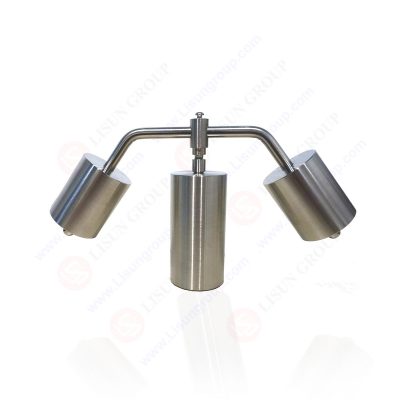

Abstract
The Ball Pressure Test for IEC 60695-10-2 is essential for evaluating heat resistance in electrical products, specifically focusing on components such as plugs and sockets used in household applications. This test ensures that these products can withstand high temperatures without deformation, maintaining functionality and safety standards. This paper outlines the Ball Pressure Test methodology, focusing on its application in testing plugs and sockets, and highlights the specifications and advantages of the LISUN ZBP-T Ball Pressure Test Device.
1. Introduction
Household and similar use plug and socket products are exposed to various environmental and operational stresses. Among these stresses, elevated temperature poses a significant risk, as it can lead to material deformation, impairing the product’s safety and functionality. To ensure that these products meet international safety requirements, the Ball Pressure Test for IEC 60695-10-2 is widely utilized. This test assesses the resistance of insulating materials in electrical devices to high temperatures, which is crucial for compliance with IEC safety standards.
The LISUN ZBP-T Ball Pressure Test Device is specifically designed to carry out the Ball Pressure Test in accordance with IEC 60695-10-2, enabling precise measurements and ensuring compliance with global standards. This paper provides a comprehensive overview of the Ball Pressure Test procedure, the technical aspects of the LISUN ZBP-T device, and its advantages in testing the heat resistance of household plug and socket products.
2. Overview of IEC 60695-10-2 Ball Pressure Test
The IEC 60695-10-2 standard outlines a method to determine the temperature at which insulating materials in electrical products begin to deform. The test is conducted by applying a 20 N force on a steel ball of 5 mm diameter onto the test sample, maintained at a specified elevated temperature.
The test primarily aims to simulate the effect of high temperatures on materials, ensuring that plug and socket components can resist deformation under heat conditions typical in household environments.
Key Aspects of the IEC 60695-10-2 Standard:
• Temperature Range: The test temperature usually varies depending on the material specifications. For household plugs and sockets, it typically ranges from 75°C to 125°C.
• Testing Force: A consistent force of 20 N is applied using the steel ball, ensuring repeatable and standardized testing conditions.
• Test Duration: The test is conducted over a fixed duration, typically 1 hour, after which deformation measurements are taken.
3. Technical Specifications of the LISUN ZBP-T Ball Pressure Test Device
The LISUN ZBP-T Ball Pressure Test Device is engineered to meet IEC 60695-10-2 requirements, providing reliable performance for assessing material deformation under high temperatures. Key technical features of the LISUN ZBP-T are as follows:
Feature
Specification
Ball Diameter
5 mm
Test Force
20 N
Temperature Control Range
Room temperature to 300°C
Precision Temperature Control
± 1°C
Heating Source
Electric heating
Test Duration
Programmable up to 99 hours
Sample Size
Flexible, depending on product
The LISUN ZBP-T device’s accuracy and adjustable parameters make it suitable for diverse testing requirements, ensuring that household plugs and sockets meet the stringent IEC 60695-10-2 standard.
ZBP-T Ball Pressure Test Device
4. Test Procedure Using the LISUN ZBP-T Ball Pressure Test Device
4.1 Sample Preparation
• Prepare samples of the plug or socket product.
• Select areas made of insulating material that are most susceptible to high-temperature exposure.
4.2 Setting Test Parameters
• Set the temperature based on the material specifications, typically between 75°C and 125°C.
• Configure the LISUN ZBP-T device to apply a constant 20 N force to the steel ball throughout the test duration.
4.3 Conducting the Test
• Place the test sample under the steel ball, ensuring proper contact.
• Start the test and maintain the set temperature for a period of 1 hour.
4.4 Deformation Measurement
• After the test duration, remove the sample and allow it to cool.
• Measure the depth of deformation, which should not exceed 2 mm to meet IEC 60695-10-2 compliance.
Sample
Temperature (°C)
Duration (Hours)
Deformation (mm)
Plug Type A
125
1
1.4
Socket Type B
100
1
1.7
Plug Type C
75
1
0.9
This table demonstrates sample results from the Ball Pressure Test on different plug and socket types, with all samples successfully passing IEC 60695-10-2 compliance.
5. Benefits of Ball Pressure Testing in Quality Assurance
5.1 Ensuring Safety Compliance
Ball Pressure Testing is essential for ensuring that plug and socket products meet the highest safety standards. Compliance with IEC 60695-10-2 minimizes the risk of material failure under heat, protecting consumers from potential hazards.
5.2 Enhancing Product Durability
High temperature resistance directly correlates to product longevity. By conducting the Ball Pressure Test, manufacturers can ensure that products withstand environmental stresses, enhancing durability and reducing product replacement rates.
5.3 Reducing Liability
Product failure due to high-temperature deformation can result in safety hazards, leading to potential liability issues. By adhering to IEC 60695-10-2 standards, manufacturers can minimize liability risks and uphold brand reputation.
6. Conclusion
The Ball Pressure Test for IEC 60695-10-2 is a vital component in the quality control process for household plugs and sockets. By testing the heat resistance of insulating materials, manufacturers can ensure compliance with international safety standards and enhance product reliability. The LISUN ZBP-T Ball Pressure Test Device offers a precise, reliable solution for conducting this test, ensuring that products meet the stringent requirements of IEC 60695-10-2.
References
IEC 60695-10-2: Fire Hazard Testing – Part 10-2: Abnormal Heat – Ball Pressure Test Method.
LISUN Group, “LISUN ZBP-T Ball Pressure Test Device,” accessed. https://www.lisungroup.com/news/technology-news/ball-pressure-test-for-iec-60695-10-2-in-heat-resistance-testing-of-household-and-similar-use-plug-and-socket-products.html
.jpg)

Comments
Post a Comment